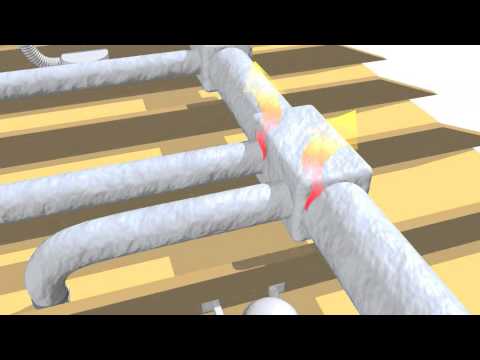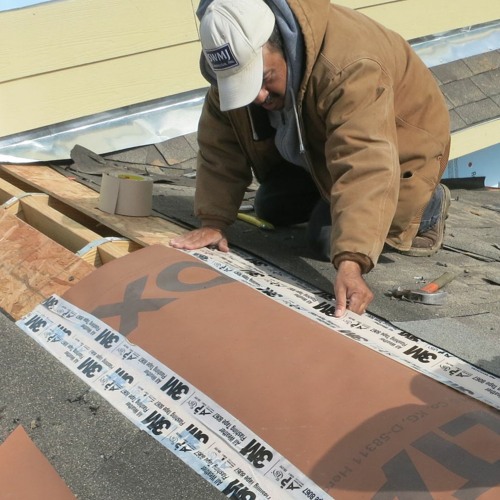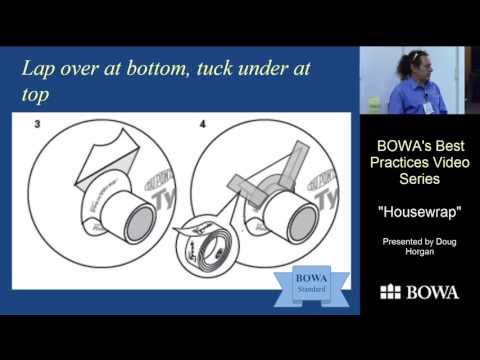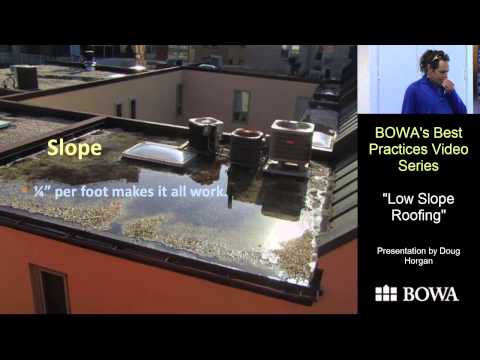We’ve been talking about walls up to now, but I figured by now you’d be getting tired of walls, so we added a roof section. Roofs are a lot like walls except that they are way out of plumb, so they see a lot more water and UV light than walls
YOU NEED TO DETAIL them to not leak. This isn’t about which roofing type to use, this is about avoiding trouble in flashing the layers before the roof cladding goes down.
We’re going to look at roof flashing in general: eaves, rake, step flashing, kickout flashing, and valley flashing. Next, we’ll go over some trouble spots: edges, connections, and transitions. Because like walls, the places where things leak are where assemblies meet. The leak usually is not in the middle of the roof where there are no penetrations or transitions.
Finally, we’ll look at the mechanics of ice dams, and then I’ll go over vented and unvented roof strategies — based on science.
Roof Flashing Overview: Mechanisms at work
How to detail common trouble spots correctly. Roofs are the first line of defense against the bombardment of water and UV rays coming from the sky.
There are a lot of places on a roof where “sweating the details: can have a big improvement in the long-term durability of the house and the profitability and legitimacy of your business.
Everyone knows there are two kinds of roofs: steep-slope and shallow-slope, or flat roofs. Flat roofs are a different animal that won’t be covered today. Instead, I’m focusing on steep-slope roofs—any roof over a 4/12 pitch.
The first video is a quick overview of the flashing/taping sequence involved, beginning at the roof deck, where carpenters are still the main subcontractor. The primary roof I’m shooting is in New Orleans, I was covering it for hurricane-resistance, but there is also a New England roof in there.
This video shows ZIP System roof sheathing, but taping the seams of a regular OSB roof has been found by the Insurance Institute lab to be extremely effective at lowering leaks from weather events, like high winds and sneaky ice.
3 Roof flashing trouble spots: Edge flashing
Now We can dig a little deeper into some of the connections and transitions in the first video.
Edge flashing. You probably noticed they the guys were folding the eaves membrane down over the top of the fascia. In New Orleans, they do that because they are always hungover and they cannot remember which goes first…
That’s not true, they are always hungover, but they know how to battle sideways rain there because they happen to see a lot of hurricanes. The New England crew does the same thing as ice dam protection, even though they are confident that their insulation and air sealing details will prevent most ice dams from occurring.
Here’s an animation of how to storm-proof your roof edges. This is important anywhere there is a tendency for high winds, sideways rain, or severe winter weather. The detail is based on the Fortified Home Standards guidelines of the Insurance Institute for Business and Home Safety, and also technical-checked by Mike Guertin, of Fine Homebuilding and JLC Live fame.
Again, sealing the gaps formed by two materials attached to each other—because unless you seal it, it is a leak. This eave detail is a durable one and may seem a little extreme, but it is based on testing in a hurricane lab, and Mike Guertin working through an effective method and order of operations.
3 Roof flashing trouble spots: dormer flashing
That’s not the only kind of roof edge, here’s another roof edge — the edge that butts into a wall, which is another typical trouble-spot.
Roof to wall connections are especially persnickety connections because the two assemblies are oriented in different directions, so they do not shrink and swell in the same directions. Which means bigger cracks and gaps can appear;
One detail about the way the layers are completed in this, is you can see above the edge of the step flashing the peel and stick membrane and the roofing underlayment.
Advice from Doug Horgan, of BOWA on the other kind of roof/wall connection:
- Wrap roof paper up the wall to backup the step flashing. Five inches up the wall is good for 4-inch step flashing. There is no reason according to physics that you have to extend them above the step flashing. The reason is so that superintendents can verify that it is done correctly without climbing up onto the roof.
- Cut the house wrap so that the roof paper can be tucked underneath.
This detail is based on technical advice, again, from BOWA in Washington, DC, but also from Hammer & Hand, who is a super high-performance builder and remodeler in The Pacific NW, where they see a lot of rain, and from a remodel friend in South Dakota, Matt Jackson, who is a one-man remodeling crew, and is an exceptional carpenter to boot.
Dormers are an example of a roof/wall interface where the roof is longer than the wall, right?
The roof extends above and below the wall section.
3 Roof flashing trouble spots: kickout flashing
Another roof/wall connection disaster is when the wall is longer than the roof. So the roof dumps water against the wall below it, where there are frequently windows.
Doug Horgan says to
- Always install a kick-out flashing. BOWA has required them for ten years, kick-out flashing is in the code now, yet many people do not use them or know what they are.
- Use 4-inch step flashings. Many siding manufacturers require a 2-inch space between the siding and the roof, so 4-inch flashings are minimum.
"Kickout flashing and 4-inch step flashing are available at Home Depot, so there is no reason to not use them."
—Doug Horgan, BOWA
This detail, again, another uberdetail, by Hammer and Hand, in Portland and Seattle, may be more trouble than many will want to go through, but including a kick-out flashing and overlapping the layers properly will drastically improve the durability of your houses.
When big remodeling companies like BOWA and Hammer and Hand invest the time and money into figuring out best practice details to eliminate the worst callbacks from their subs and crews, I feel like it’s a good idea to pay attention. These companies didn’t make up these details and procedures for a magazine article, they made them for their jobsite superintendents.
To execute efficiently in the field.
So now the topic that editors love because it happens every year and you can ALWAYS publish articles and videos about it because everyone will always click it every time. Literally. It’s like the crown molding of roof problems.
One of the things that makes it mysterious is that none of the subs really have to take responsibility. It’s not the roofer’s fault if there’s an ice dam, it’s God’s fault. Roofers can add layers to protect against inevitable ice dams, but roofers cannot prevent ice dams.
Drywall contractors have to fix damage from ice dams, but they cannot prevent it. That they know of.
The Complicated Reality of Ice Dams: it’s really pretty simple, sort of
ice dam | īs dam (n)
"The buildup of ice in an area of the roof where there is a temperature difference that causes melting of snow and freezing of the water at the same time, in different areas".
—Jonathan Smegal, RDH Building Science Labs
In general, snow melts on a warm part of the roof and dribbles downhill until it gets to a cold part of the roof, and it freezes there. The next bit of water to dribble downhill freezes when it gets to the frozen previous dribble, and the ice builds taller. As the ice builds taller, water pools behind it on the warm part of the roof.
Water is no fool, it knows that it is warm inside, so that’s where it goes. Inside the house in any way that it can—usually through gaps and cracks where two pieces of lumber or sheathing meet.
This further illustrates the concept that if you don’t seal it, then it is a leak. Not a "could-be a link," IS a leak.
The next video is from the Pacific Northwest National Lab, through the Building America Solutions Center explaining how ice dams form and how to fix them. They even go into detail about heavy snow loads where the snow is thick enough to insulate the roof deck above freezing.
The main points:
- Warm Air rises
- Leaks happen
They showed a couple of retrofit solutions, and I have some animations of those details coming up. Ice dams are preventable, they are not inevitable. Ice dams are not the roofer’s fault, but more importantly, the roofer doesn’t know how to fix them aside from “adding ventilation.”
Ice dams are not REALLY the insulator’s fault, though by now, insulation contractors should be air sealing experts, too. But many are not. Ice dams are the general contractor’s responsibility because they are a problem caused by the gaps and cracks between all of the trades. And if you don't seal it, it is a leak. Not maybe a leak, a leak.
Vented and unvented Roofs: When, why, and how
Let’s look at solutions. So another thing that construction editors like me like is the big Vented vs. Unvented roof debate. But really, there’s not a debate. Its often just a bunch of people talking past each other.
Vented roofs are an excellent idea and you should vent your roof if at all possible.
Sometimes it is not very possible, like on hip roofs, or roofs with a lot of dormers, or other geometric configurations that interrupt a direct path from eave to ridge. If the roof has difficult configuration, the best ventilation strategy is to not vent it.
I think it’s also worth pointing out that attics are different than roofs. It seems obvious, but it also matters because gable vents are venting an attic, which sits under a roof, so it keeps the roof cool.
If you choose to convert that attic to living space, the vented roof goes away, and you need to figure out either how to construct a vented or unvented roof assembly above the attic living space and below the roof deck.
And you still probably need to meet code for insulation levels in the roof, which probably means doing one of these two details similar to the ones in the Pacific NW Lab video
I believe the layers of foam in the animations are 2-inches thick, so you live in Duluth, you can add another layer, or use thicker foam. Or both.
There are tables and charts for figuring out the right depth and thickness depending on your local conditions. I’m going to start with the unvented roof assembly not because it is better, but because the vented roof assembly adds to the detail covered here.
That detail should work in most places, again with the foam thickness depending on the climate zone. For deep snow areas, or to simply build a bombproof roof, add a ventilation channel between the foam and the roof deck.
I didn’t include a ridge vent at the ridge, because I thought it was obvious. But in case it wasn’t, I’m saying it now.
Roof problems, solutions, details, and dilemmas is a pretty big topic, We covered some important trouble spots and common questions, but there its a LOT more to learn and explore.











